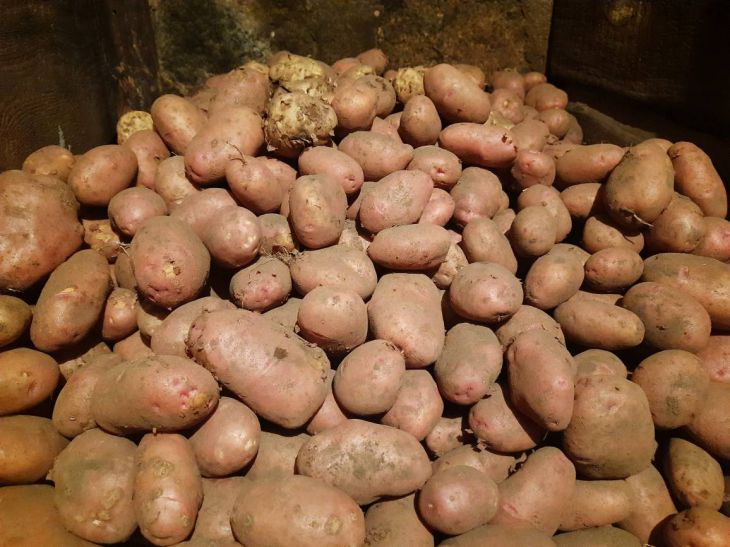Throw Away Your Shovel! The Dutch Method of Growing Potatoes Surprises Even Experienced Gardeners
Dutch farmers have long since given up on shovels and now harvest 500 kg of potatoes per hundred square meters.
We reveal a technology that will turn your garden into a factory of large and healthy tubers.
What's the secret?
The Dutch method is based on three principles:
1. No digging. The soil is loosened to a depth of 15 cm without turning the layer.
2. Wide row spacing. The distance between the ridges is 75 cm.

3. Aeration instead of hilling.
Why does this work?
Potato roots receive maximum oxygen and moisture. Wide rows prevent rot and late blight.
5 Steps to a Dutch Harvest
Step 1: Select varieties. Only mid-early and mid-late varieties with high resistance to diseases are suitable:
- Red Scarlett (yield up to 600 c/ha).
- Impala (not afraid of drought).
- Rosara (immunity to scab).
Advice: do not buy cheap seed material. The Dutch use only certified 2nd reproduction tubers.
Step 2: Preparing the soil:
- In autumn, add rotted manure (5 kg per 1 m²).
- In spring, loosen the soil with a cultivator or pitchfork (depth – 15 cm).
- Form ridges 25 cm high, directed from north to south.
Important! Do not dig with a shovel - this destroys the soil structure and kills beneficial microorganisms.
Step 3. Planting:
- The depth of planting tubers is 6-8 cm.
- The distance between plants is 30 cm.
- The width between rows is 75 cm.
Life hack: plant potatoes with the sprouts facing up - this will speed up the germination by 5-7 days.
Step 4. Care:
- After 2 weeks from emergence, loosen the space between the rows with a hoe (depth - 5 cm).
- During the flowering period, spray the bushes with Fitosporin to prevent late blight.
- Water only during drought (once every 10 days, 10 liters per bush).
Tip: The Dutch do not hill up potatoes! Loosening replaces this procedure, maintaining air access to the roots.
Step 5. Cleaning:
- Mow down the tops 10 days before harvesting. This will speed up the ripening of the tubers.
- Use a pitchfork instead of a shovel to avoid damaging the potatoes.
Advantages of the method
Plus 200% yield due to the correct planting scheme.
Saves time. No need to dig and hill up.
Less disease. Wide rows prevent the spread of fungi.
The experience of the Voronezh Agrarian University has confirmed that Dutch technology increases crop yields by 170% compared to traditional technology.
4 mistakes that will reduce the result to zero
1. Narrow row spacing. Leads to thickening and rot.
2. Deep planting. The tubers "suffocate" and become smaller.
3. Refusal of crop rotation. Potatoes are returned to their previous location after 4 years.
4. Neglect of varieties. Early varieties do not have time to gain weight.
Conclusions
The Dutch method is not a myth, but a working tool. It requires precision, but pays off with buckets of even, large tubers. Throw away the shovel and try it - your potatoes will surprise even your skeptical neighbors!
